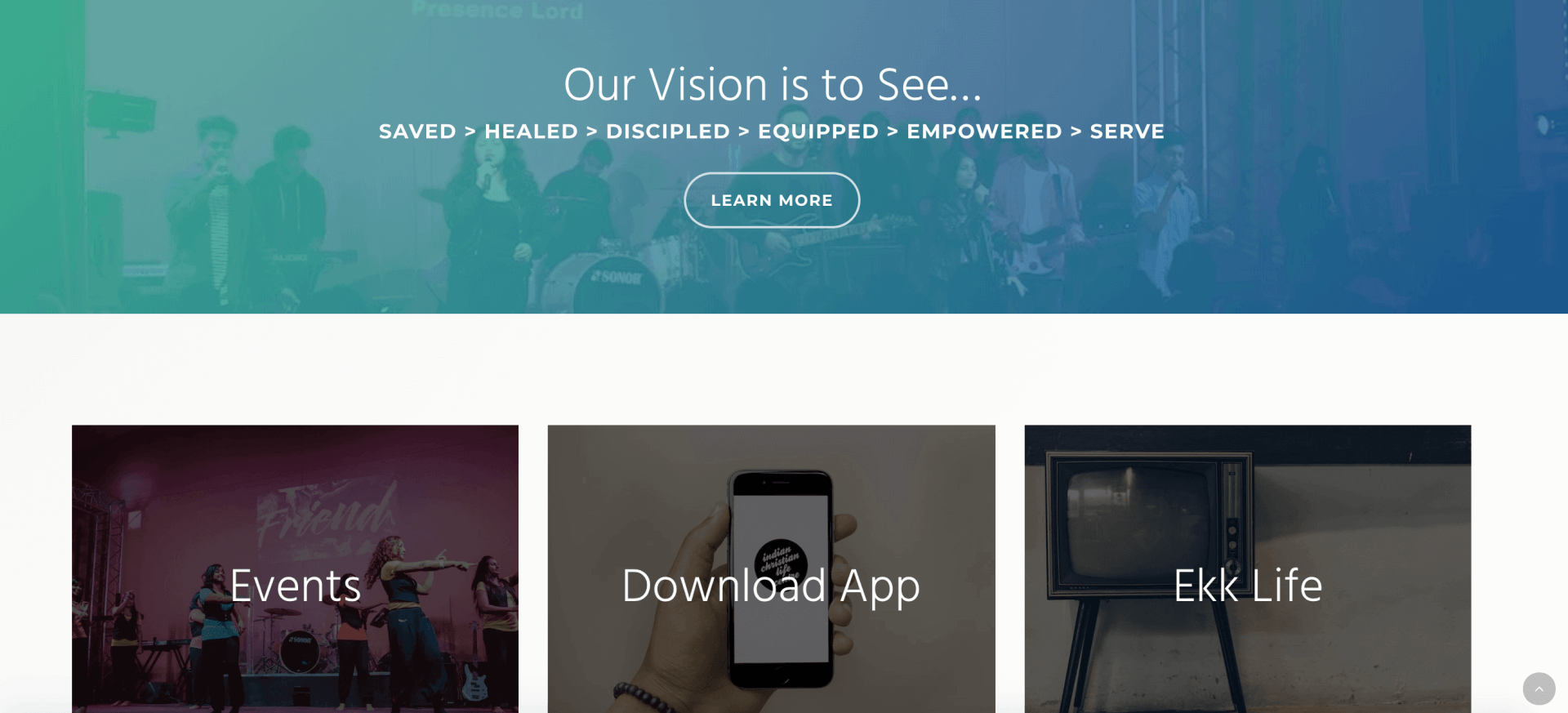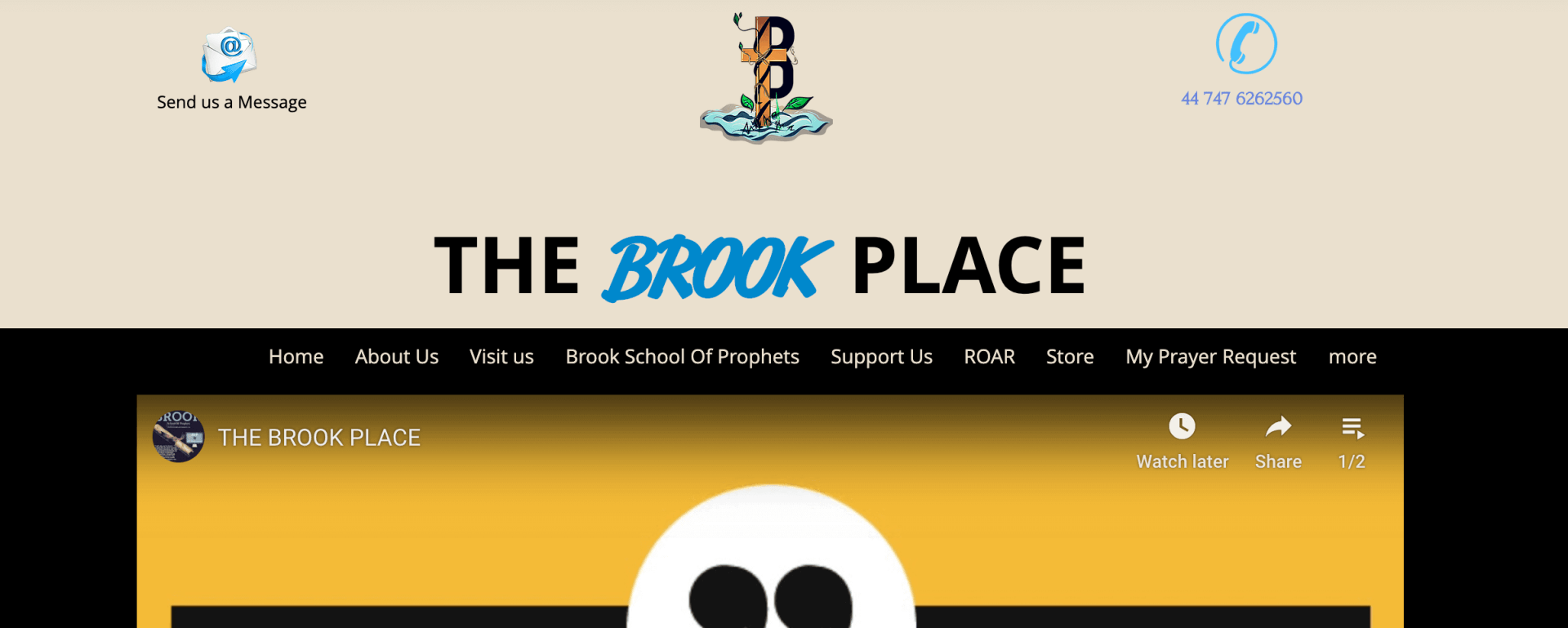Every Genesis Begins with A Revelation
The Revelation Platform is a Website builder specially made for churches , ministries, pastors and kingdom businesses so that they are able to easily edit, blog and share with the world
the message of Jesus.
Why Pastors Work with Revelation

“ICLC has been working with Revelation for over a decade and they have definitely brought in results. More & more people are getting to know us”
Moses Singh, NZ

“Revelation rebranding and migrating me to their platform has been best marketing decision I've made”
Apostle Alexander Pagani, USA

“This team has been with us from the get go, they designed our ministry website and deployed our brand online and have been helping us ever since"
Vincent Mudaliar, USA

"Revelation Team, helped me migrate from WIX rebranding my website, the results and the capabilities have been worth it"
Dr Oscar Guobadia, LONDON
Direct Messaging
Don't miss interacting with potential visitors through WhatsApp. Quicker responses mean that you don't let them slip because out of mind means out of sight
Instantly Edit
We understand the struggle of having non-technical volunteers so we teach you to easily edit your website on our CMS. Keeping an updated website a reflection of excellence
Lower Fees
Lower overall design fees that are not plugged into a subscription fee. We want you to own your site and have full control over the way you run your finances. Plans starting at $16 USD
Client: ICLC
A clear example of Revelation - (SWIPE LEFT TO RIGHT on image)


Solution: Indianclc.org was a slow loading Wordpress website that took over 5-10 seconds to load. The revelation team had decided to revamp the site by building it on a much faster platform. They found too much time was wasted teaching volunteers who were unable to understand. With Revelation, indianclc.org turned into iclc.co.nz which so far has had tremendous impact. Firstly, volunteers can blog and update website from their mobile phone, the pastors is receiving weekly detailed reports on website statistics and most importantly website load time is under 2 seconds.
Client: Alexander Pagani
A clear example of Revelation - (SWIPE LEFT TO RIGHT on image)


Solution:
From an old html based website with no security, with no visitor statistics, no engaging content. Alexander Pagani was consulted by Revelation Websites to bring about a massive transformation to their branding and ministry website.
Client: Dr Oscar Guobadia
A clear example of Revelation - (SWIPE LEFT TO RIGHT on image)


Solution: Dr Oscar was self managing his websites with WIX, with no human support and no background knowledge, he built a website with a free editor. We had contacted him and renovated his website with the focus being visitor engagement. Today he is receiving over 500 views on his site, with contact form submissions increasing day by day. The results have been amazing.
Is your church website mobile-friendly?
We guarantee faster pagespeed than websites built on sluggish platforms like WordPress, faster pagespeed than at least 77% of all mobile websites which means increased conversions.
Google knows how important pagespeed is to user experience and factors it into their ranking.
The faster your website’s pagespeed, the higher your Google ranking and the better your SEO. 43% of mobile visitors will move on to another site if their experience is negative.
Revelation = Visitors Engaging
On Your Site
People Visit Your Church Online Before They Visit It In Person
A website is now a must-have for doing church in today’s world, and it’s essential that it
looks great and works perfectly on desktop, tablet and mobile.
57% Of all Google searches happen on a mobile device
74% of mobile users are more likely to revisit a site that works well on mobile.

JOSHUA SINGH
Visionary & CEO
As the founder of Revelation, Joshua invests much of his time reaching out to Pastors and building value into small to medium sized ministries. He identifies with the lack of resource and shortage of time that every minister has and desires to bring productivity through systems. His desire is to help people in ministry grow their influence through marketing 'hacks' that many churches have not yet discovered. Recently he has graduated from Masters of Ministry and is pursing further studies.
01
Select Template
Select your favourite template, enter your name and email
02
Start Designing for Free
Experience and use the full features of Revelation platform
03
Pay to Publish
Only pay revelation when you're ready to go live!
FAQs
Got a question?
We’re here to help.





